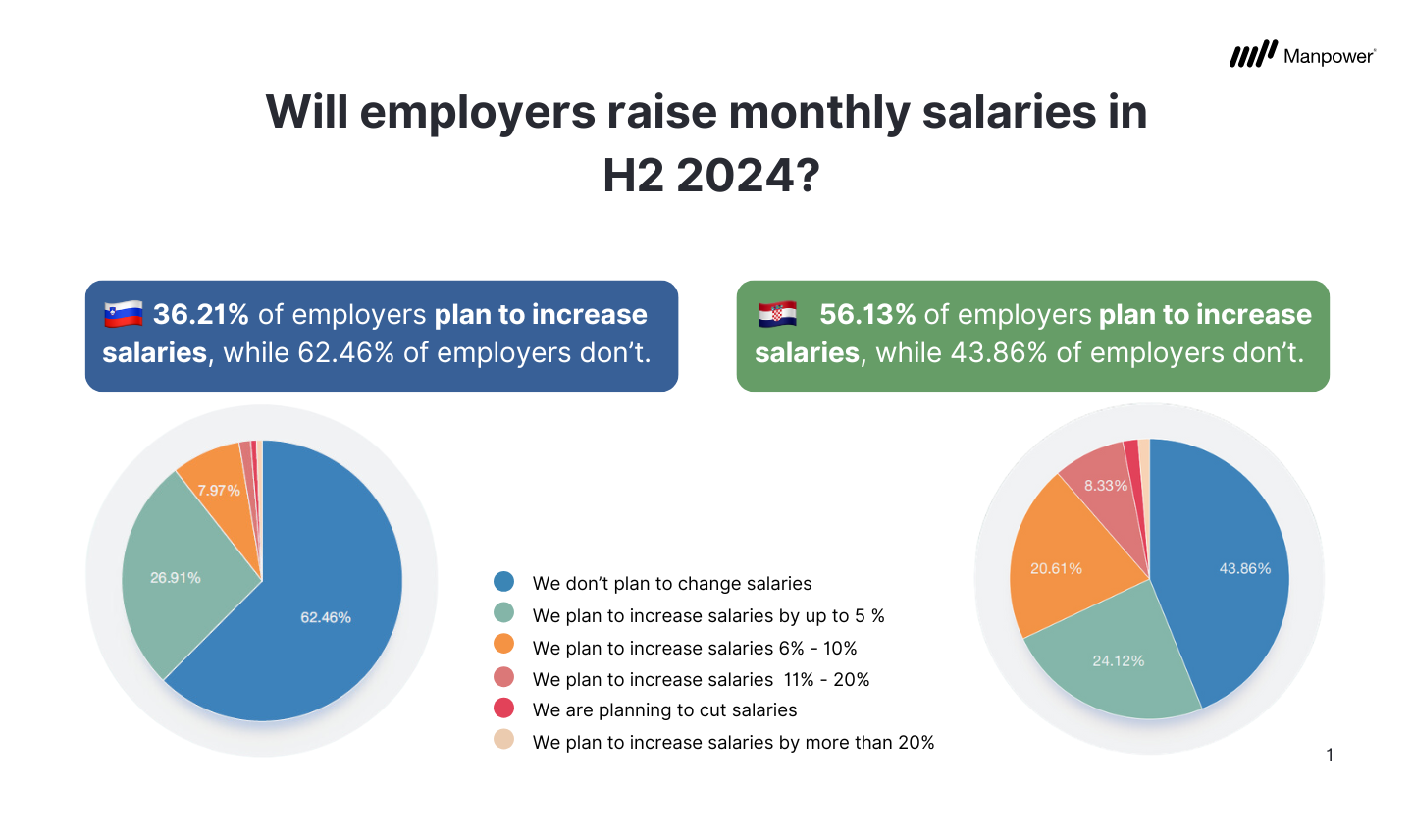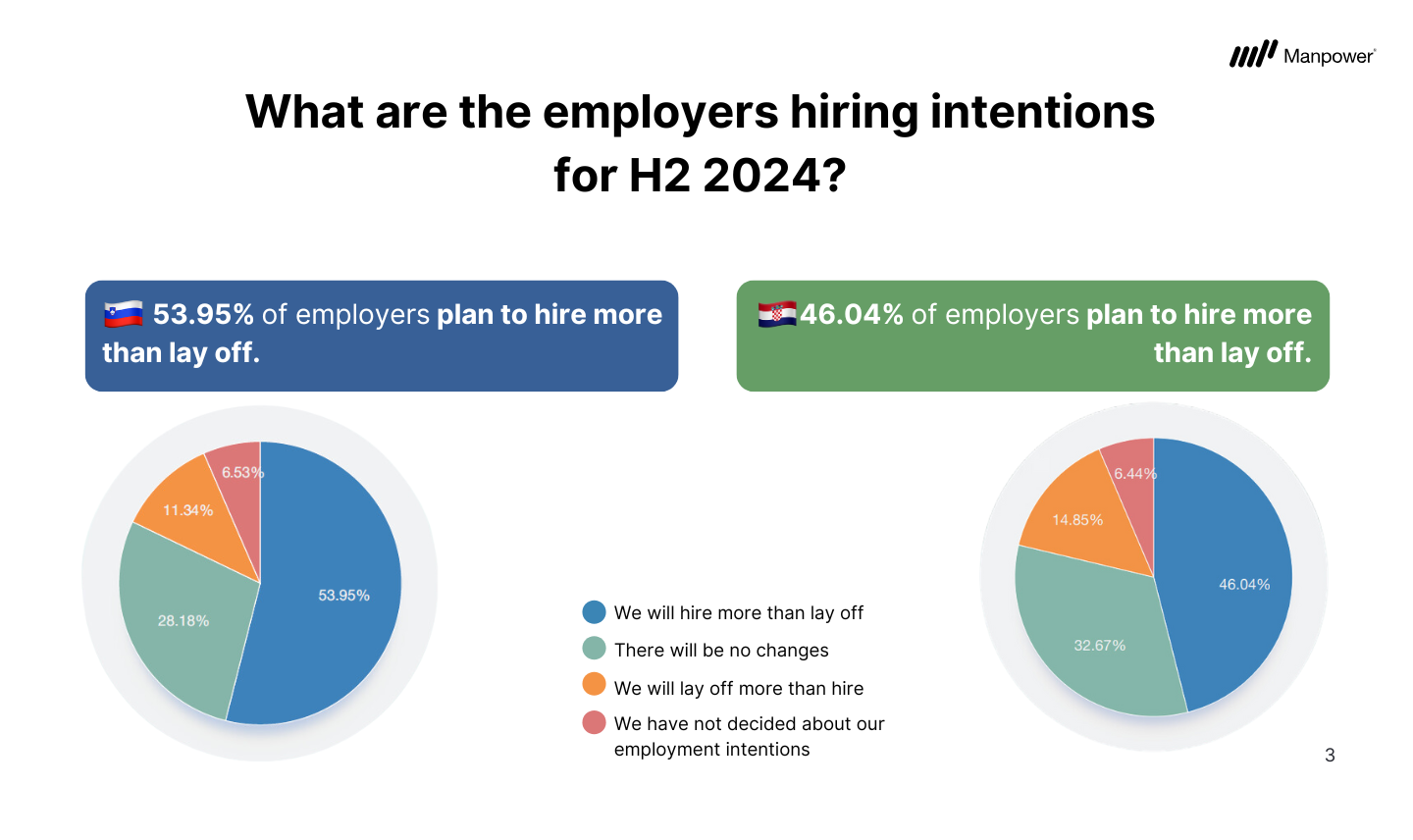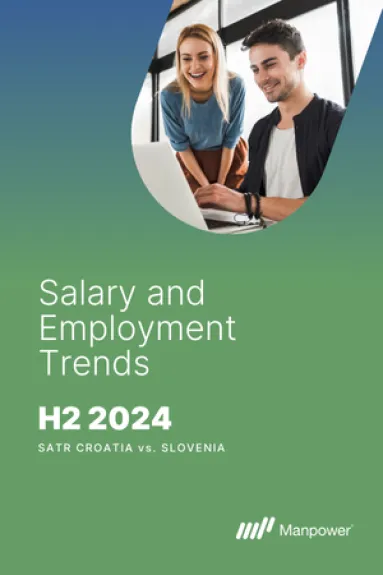
SATR H2 2024: Comparison of salary and employment trends in Slovenia and Croatia
As we approach the end of 2024 Slovenia and Croatia are seeing distinct trends in employment and salary landscapes, shaped by regional economic shifts, workforce availability, and changing employee expectations.
With an average gross salary of €2,353 in Slovenia compared to €1,838 in Croatia, according to the latest data, the salary gap highlights differing economic conditions and labor demands between the two nations. (Source: DZS and SURS)
Both EU members with evolving labor markets are navigating growth while tackling unique challenges in meeting global salary expectations, workforce needs, and adapting their approach to employee benefits.
But what are the differences in employer hiring intentions?
In the Salary and Employment Trends research for the second half of 2024, we compared salary and employment trends between Slovenia and Croatia based on responses from over 500 companies.
The forecast for salary increases in Slovenia and Croatia reflects the unique needs of each market
In Slovenia and Croatia, employers’ plans for salary changes in the second half of 2024 had their differences.
According to the SATR H2 2024 research, in Slovenia, companies are more reserved, with only about a third planning salary hikes, while the majority (62.46%) don’t intend to raise salaries for their employees. This steady approach reflects a focus on maintaining stability in an already competitive salary landscape.
In contrast, Croatia’s employers are leaning towards raising salaries, with more than half expressing intentions to increase wages. This move is likely driven by the need to attract and retain talent in a market heavily influenced by seasonal tourism and rising living costs.
Although geographically close, both Slovenia and Croatia exhibit unique labor dynamics. Slovenia’s steady approach aims for stability, while Croatia's gradual rise in salaries responds directly to market demands.
For businesses, these regional shifts underscore the importance of balancing competitive salaries with sustainable growth, as the workforce continues to evolve across borders.

What are the differences in the forecasted additional employee benefits?
SATR H2 2024 employer predictions in Slovenia and Croatia are taking notably different approaches to employee benefits. Slovenian employers are playing it safe, with most employers (80.4%) not planning any changes in additional benefits.
Meanwhile, in Croatia, there's a bit more willingness to shake things up, with 37.72% of employers considering tweaks or even enhancements to their benefits packages.
The real question is: will these trends hold steady, or will 2025 bring a new wave of changes as both markets adapt to shifting workforce demands?
Manpower does salary and employment trends every half of the year, you can check our reports.
Who planned on hiring more: Croatian or Slovene employers?
Hiring intentions in both Croatia and Slovenia have risen for the latter half of 2024, reflecting an optimistic outlook in specific industries.
In Slovenia, the hiring predictions were positive, with over half of employers (53.95%) planning to bring in more talent than they let go. Meanwhile, only a small portion (11.34%) anticipates more layoffs than hires, highlighting a generally growing job market.
Meanwhile, in Croatia, where 46.04% of employers plan to increase hiring, the labor market is marked by a high demand for seasonal workers. This demand often outstrips supply, pressuring employers to offer higher salaries and better work conditions.
While the hiring outlook remains positive in both countries, Croatia’s reliance on seasonal workers leads to employment rate fluctuations, whereas Slovenia’s year-round industries contribute to greater stability.

In which industries did employers plan to hire the most?
Slovene employers planned on hiring more in IT, banking, finance, and insurance.
While Croatian employers predicted the most hiring intentions for the sectors of tourism and hospitality, telecommunications & electrical engineering, and construction.
Challenges and employment outlook for Slovenia and Croatia
While both countries experience growth trends in the labor market, challenges remain.
Both Croatia and Slovenia are navigating the complexities of a modern labor market, characterized by evolving salary expectations, high demand for skilled labor, and increasing emphasis on work-life balance.
Slovenia’s average gross salaries place it ahead in attracting talent, though Croatia’s unique strengths in tourism and show promise for continued need for skilled hirings.
In the coming years, both countries will likely need to focus on talent retention, upskilling, and creating more competitive work environments.
For employers in both Slovenia and Croatia, adapting to these trends will be essential to remain competitive and build a resilient, future-ready workforce in the region.
Curious about the salary and employment trends for the first half of 2025?
Every 6 months, Manpower conducts an in-depth salary and employment trends survey for Slovenia and Croatia. The Salary and Employment Trends report for the first half of 2025 will be published in January 2025.
You can view our latest market and salary research reports.




